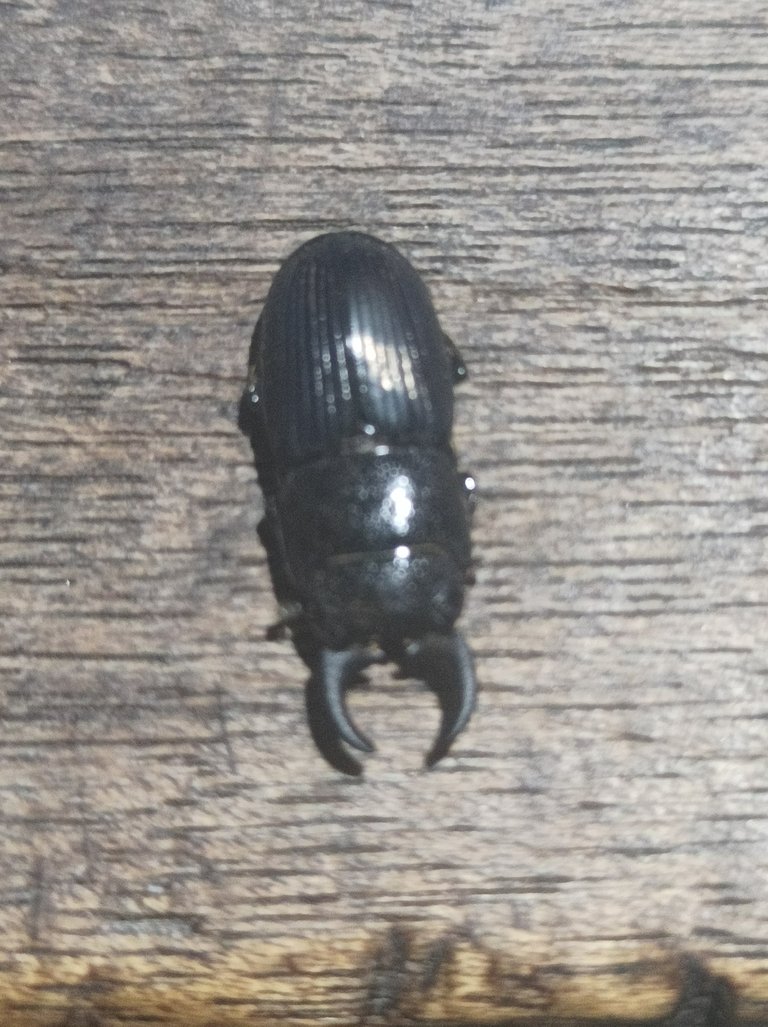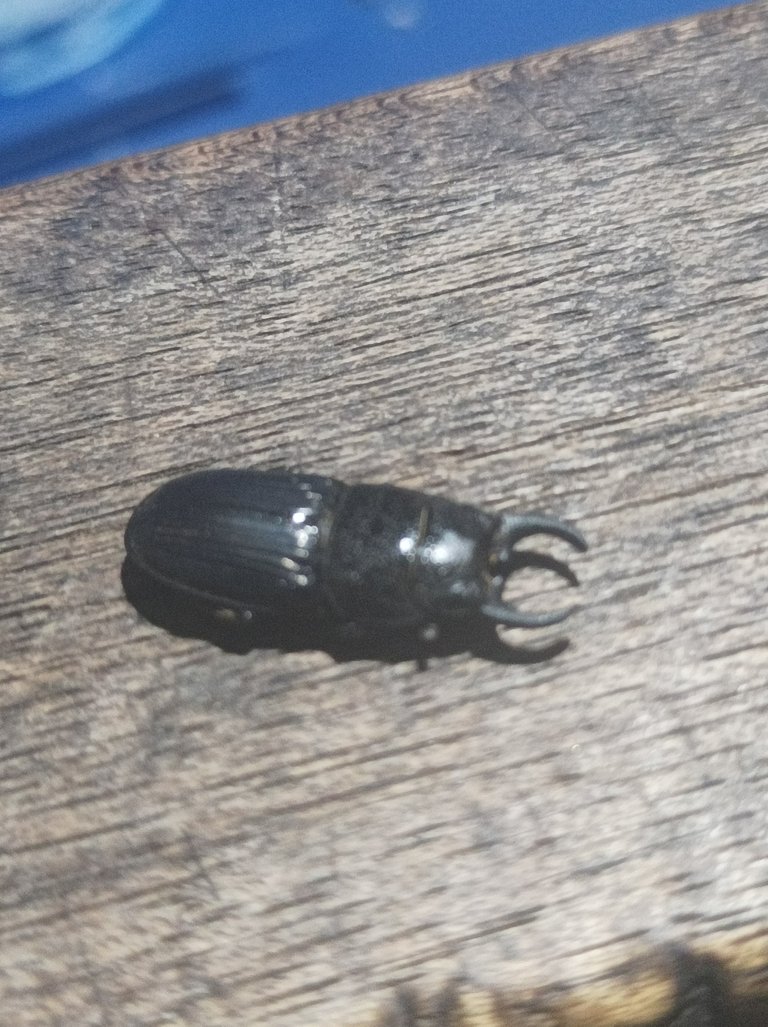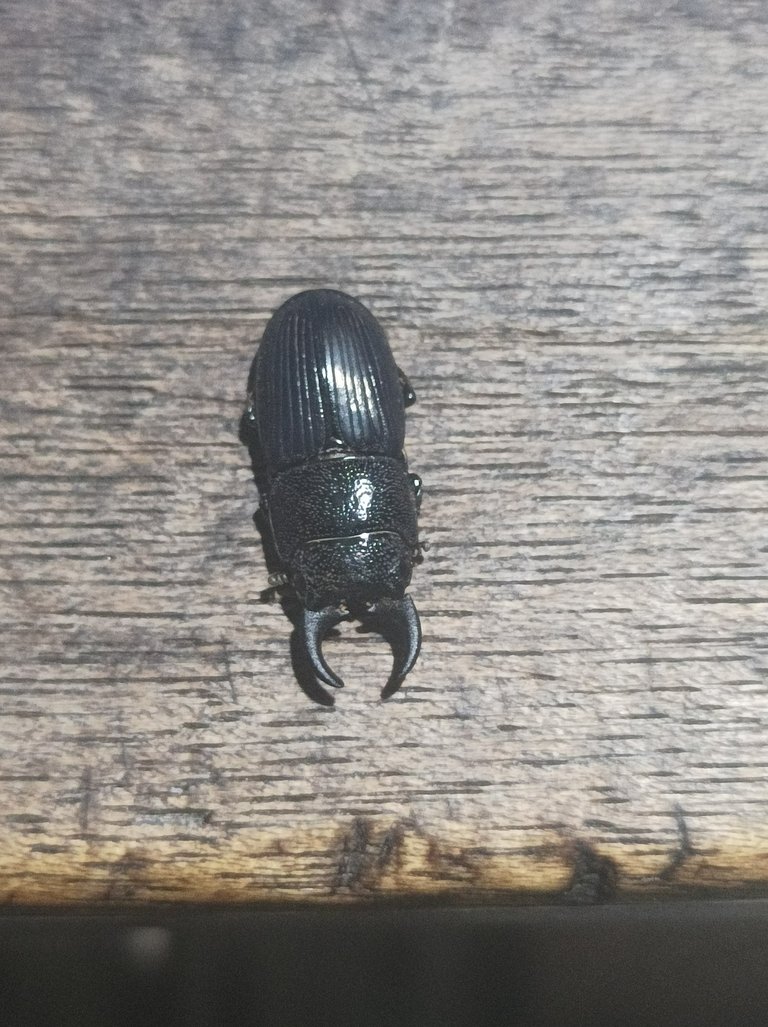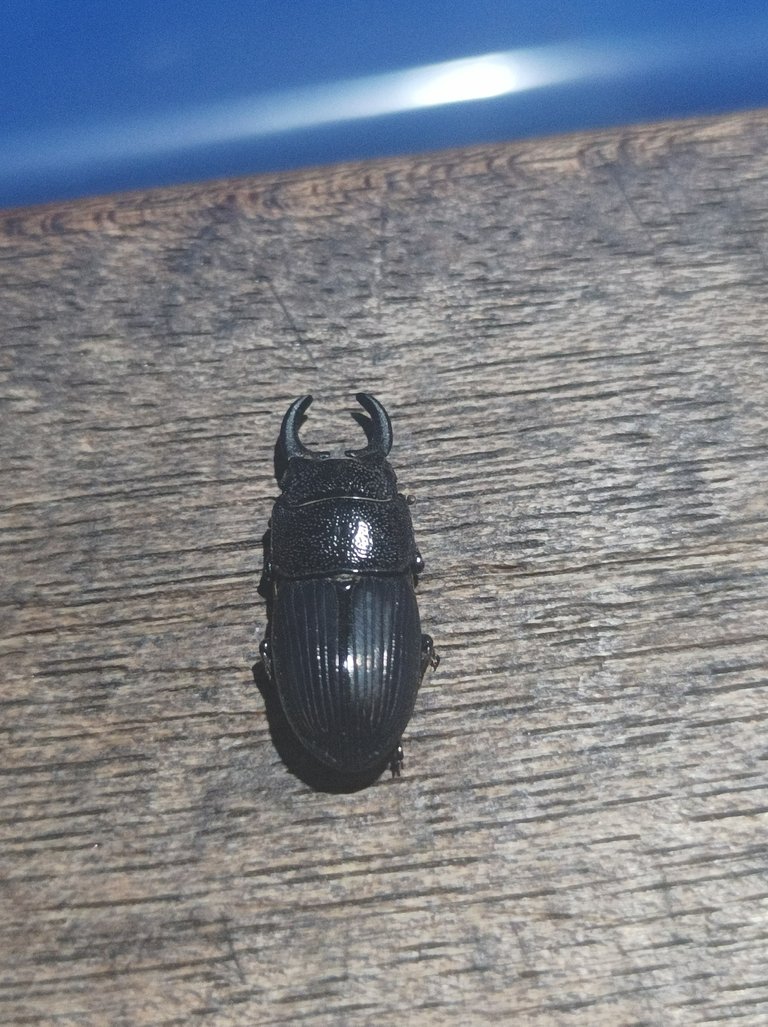Hi guys,,,..
I'm back to this app with all of you.
Today I want to share stories with my friends who are in the same profession and. Yesterday I got a beetle that I have never seen, and this time I want to discuss this animal, let's learn about it




The body shape of each beetle varies greatly, the body of the male beetle is 2.4 cm - 7.8 cm, while the body of the female beetle ranges from 3.3 cm - 4.7 cm. The tip of the head has a large jaw, at the bottom there is a protrusion, making the jaws look very strong, which is the main characteristic of this species. In front of the thorax there is a depression in the shape of an arc, on the front pair of wings (elytra) there are vertical lines. On the tibia of the forelegs there is a saw-shaped protrusion, the hind legs have no spines.
Adult beetles will generally appear from April to August, tree sap is the beetle's main food. At night there is a strong photokinetic process (reaction to light), often gathering under street lights. The larvae feed on dead wood on Fagaceae plants, usually called insect larvae. The giant Taiwan stag beetle is an endemic species of Taiwan, widely distributed in laurel forests and conifer forests in mountainous areas at altitudes of 200 - 2,000 meters. There are records of discoveries about giant stag beetles that have been found, namely in the northern part of Taiwan including Wulai, Lalashan, along the northern horizontal highway, Jianshi, Guanwu; in central Taiwan includes Anmashan, Songgang, Wushe, Aowanda and Sun Moon Lake; as well as in the southern part of Taiwan covering Liugui, Tengchi, Kenting and along the southern horizontal highway.
The body size of this type of beetle is bigger than other stag beetles, the giant Taiwanese stag beetle has gained popularity in the pet market. Even though they are classified as protected animals, the beetle trade occurs in quite severe conditions. Initially, the number of these species was not large, coupled with overfishing, the threat of extinction increased.
